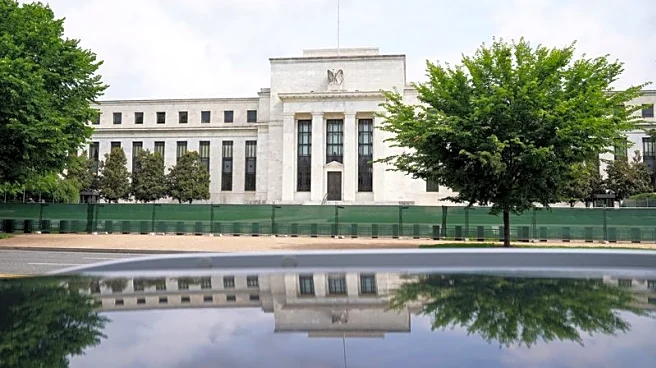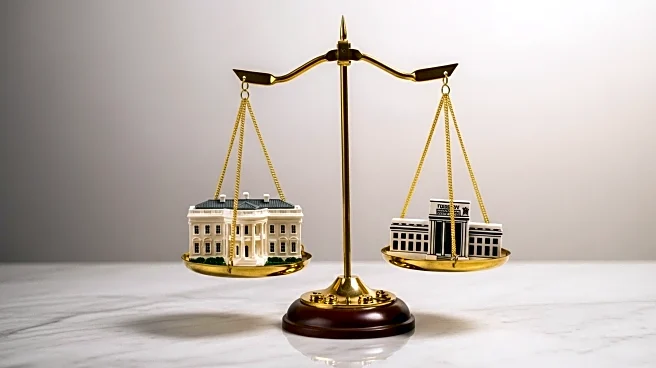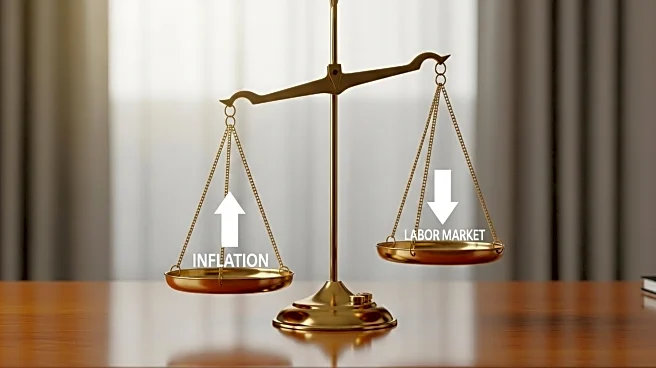What's Happening?
The Federal Reserve is expected to lower its benchmark interest rate next week in response to signs of a weakening job market. Recent revisions by the Labor Department revealed that the U.S. economy added 911,000 fewer jobs than initially estimated in the year through March. This adjustment highlights a slower pace of job growth, particularly affecting service sectors such as leisure and hospitality. The Fed has maintained its interest rates unchanged since December, balancing concerns over inflation potentially reignited by President Trump's tariffs. The latest data, showing only 22,000 jobs added in August and a slight increase in the unemployment rate to 4.3%, has reinforced expectations for a rate cut.
Why It's Important?
The anticipated rate cut by the Federal Reserve is significant as it aims to stimulate job growth in a slowing economy. A reduction in interest rates could lower borrowing costs for businesses and consumers, potentially boosting economic activity. However, the decision comes amid concerns that tariffs imposed by President Trump could lead to inflationary pressures, complicating the Fed's policy choices. The revisions in job growth figures underscore vulnerabilities in the labor market, which could impact consumer confidence and spending. Stakeholders in sectors like leisure and hospitality may face challenges as employment growth slows, affecting overall economic health.
What's Next?
The Federal Reserve's decision on interest rates will be closely watched by investors and policymakers. A rate cut could lead to increased market activity, but it may also prompt debates on the balance between stimulating growth and controlling inflation. Businesses and financial markets will likely react to the Fed's actions, with potential implications for stock market performance and investment strategies. The Trump administration's calls for rate cuts add political pressure on the Fed, which must navigate economic indicators and policy impacts carefully.












